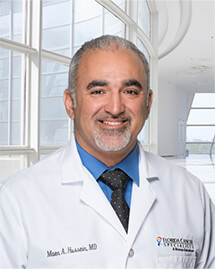Author(s): Michael J. Dickinson, M.B., B.S., D.Med.Sc., Carmelo Carlo-Stella, M.D., Franck Morschhauser, M.D., Ph.D., Emmanuel Bachy, M.D., Ph.D., Paolo Corradini, M.D., Gloria Iacoboni, M.D., Cyrus Khan, M.D., Tomasz Wróbel, M.D., Fritz Offner, M.D., Ph.D., Marek Trněný, M.D., Shang-Ju Wu, M.D., Ph.D., Guillaume Cartron, M.D., Ph.D., Mark Hertzberg, M.B., B.S., Ph.D., Anna Sureda, M.D., Ph.D., David Perez-Callejo, Ph.D., Linda Lundberg, Ph.D., James Relf, M.D., Mark Dixon, M.Sc., Emma Clark, M.Sc., Kathryn Humphrey, B.Sc., and Martin Hutchings, M.D., Ph.D.
BACKGROUND
The prognosis for patients with relapsed or refractory diffuse large B-cell lymphoma (DLBCL) is poor. Glofitamab is a bispecific antibody that recruits T cells to tumor cells.
METHODS
In the phase 2 part of a phase 1–2 study, we enrolled patients with relapsed or refractory DLBCL who had received at least two lines of therapy previously. Patients received pretreatment with obinutuzumab to mitigate cytokine release syndrome, followed by fixed-duration glofitamab monotherapy (12 cycles total). The primary end point was complete response according to assessment by an independent review committee. Key secondary end points included duration of response, survival, and safety.
RESULTS
Of the 155 patients who were enrolled, 154 received at least one dose of any study treatment (obinutuzumab or glofitamab). At a median follow-up of 12.6 months, 39% (95% confidence interval [CI], 32 to 48) of the patients had a complete response according to independent review. Results were consistent among the 52 patients who had previously received chimeric antigen receptor T-cell therapy (35% of whom had a complete response). The median time to a complete response was 42 days (95% CI, 42 to 44). The majority (78%) of complete responses were ongoing at 12 months. The 12-month progression-free survival was 37% (95% CI, 28 to 46). Discontinuation of glofitamab due to adverse events occurred in 9% of the patients. The most common adverse event was cytokine release syndrome (in 63% of the patients). Adverse events of grade 3 or higher occurred in 62% of the patients, with grade 3 or higher cytokine release syndrome in 4% and grade 3 or higher neurologic events in 3%.
CONCLUSIONS
Glofitamab therapy was effective for DLBCL. More than half the patients had an adverse event of grade 3 or 4. (Funded by F. Hoffmann–La Roche; ClinicalTrials.gov number, NCT03075696. opens in new tab.)
Author Affiliations
From the Peter MacCallum Cancer Centre, Royal Melbourne Hospital, and the University of Melbourne, Melbourne, VIC (M.J.D.), and Prince of Wales Hospital and the University of New South Wales, Sydney (M. Hertzberg) — all in Australia; Humanitas University and Istituti di Ricovero e Cura a Carattere Scientifico (IRCCS) Humanitas Research Hospital (C.C.-S.), and Università degli Studi di Milano and Fondazione IRCCS Istituto Nazionale dei Tumori (P.C.) — all in Milan; Université de Lille, Centre Hospitalier Universitaire (CHU) Lille, Unité Labellisée de Recherche 7365, Groupe de Recherche sur les Formes Injectables et les Technologies Associées, Lille (F.M.), Centre Hospitalier Lyon Sud, Lyon (E.B.), and CHU de Montpellier, Centre National de la Recherche Scientifique, Unité Mixte de Recherche 5535, Montpellier (G.C.) — all in France; Vall d’Hebron University Hospital (G.I.) and Institut Català d’Oncologia Hospitalet, Institut d’Investigació Biomèdica de Bellvitge (IDIBELL), Universitat de Barcelona (A.S.) — both in Barcelona; the Allegheny Health Network Cancer Institute, Pittsburgh (C.K.); Uniwersytet Medyczny we Wrocławiu, Wroclaw, Poland (T.W.); Universitair Ziekenhuis Gent, Ghent, Belgium (F.O.); the First Faculty of Medicine, Charles University Hospital, Prague, Czech Republic (M.T.); National Taiwan University Hospital, Taipei (S.-J.W.); F. Hoffmann–La Roche, Basel, Switzerland (D.P.-C., L.L.); Roche Products, Welwyn Garden City, United Kingdom (J.R., M.D., E.C., K.H.); and Rigshospitalet, Copenhagen (M. Hutchings).
